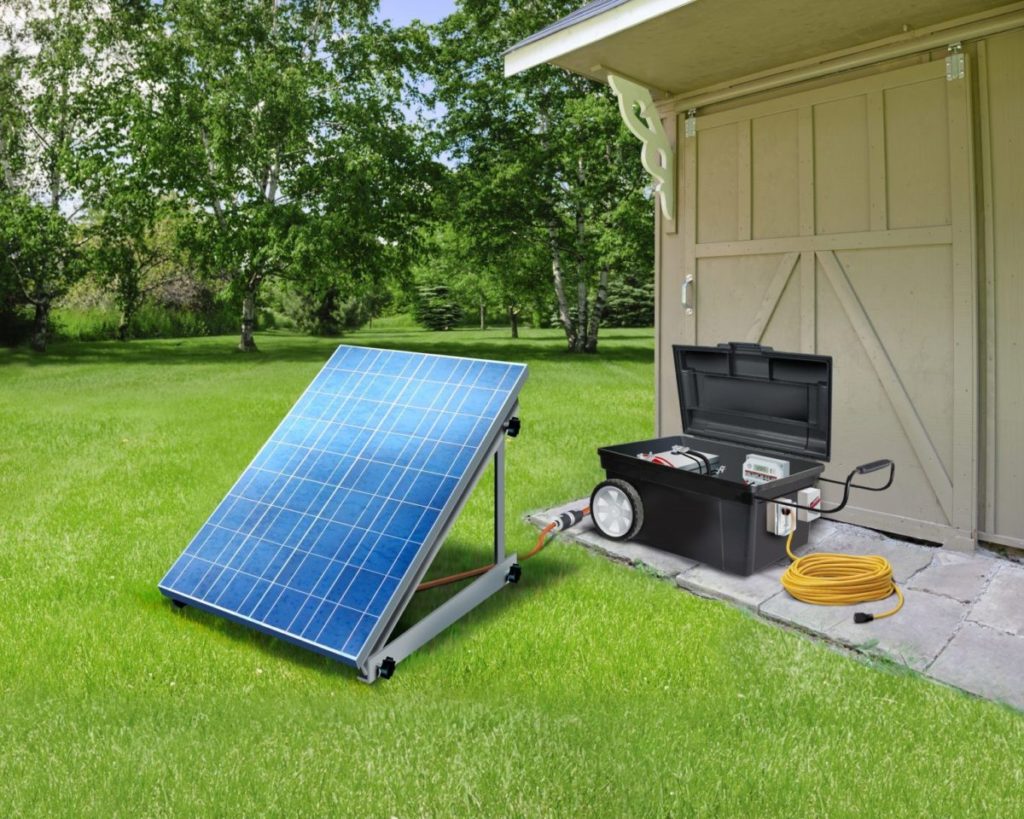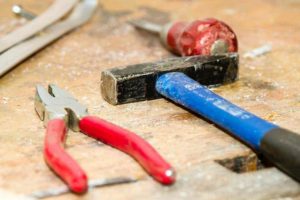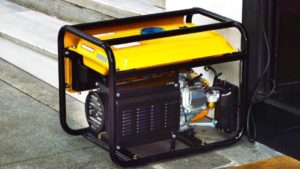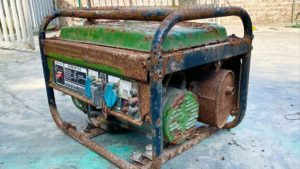Are you tired of relying on the grid for your energy needs?
Do you want to reduce your carbon footprint and save money on your electricity bills?
If so, then consider embarking on a DIY hybrid energy project!
With the right knowledge and tools, you can create a customized off-grid power solution that meets your unique needs.
From solar panels to wind turbines, and from battery banks to inverters, there are countless options available for building your own hybrid energy system.
Whether you’re a seasoned DIYer or just starting out, this guide will provide you with the actionable information and expert insights you need to get started on your journey towards energy independence.
Determine your energy needs
Before you start building your off-grid power solution, you need to determine your energy needs. This will help you decide on the size and type of system you need.
This will help you decide on the size and type of system you need, as well as ensure that you’re not overspending on unnecessary components.
Start by assessing your energy usage habits and identifying which appliances and devices you need to power.
For example, if you only need to power basic lighting and cooking appliances, a smaller system with a solar panel array and a battery bank may be sufficient.
On the other hand, if you plan to power high-energy devices like air conditioning units or electric vehicles, you’ll need a larger system with more powerful components.
Consider your location and the amount of sunlight your area receives, as this will affect the size and type of system you need.
By accurately determining your energy needs, you can create an effective and efficient off-grid power solution that meets your needs without breaking the bank.
Choose the right combination of power sources
Hybrid energy systems can combine different power sources such as solar, wind, hydro, and fossil fuels. You need to choose the right combination of power sources that best fits your needs and location.
Hybrid energy systems offer the flexibility to combine different power sources, such as solar, wind, hydro, and fossil fuels, to cater to your specific energy needs and location.
This tailored approach ensures that you can maximize the benefits of each power source and minimize their limitations.
For instance, you can prioritize solar energy during the day and rely on wind power at night, or use hydro energy during periods of high water flow and supplement with fossil fuels during lean periods.
By carefully selecting the right combination of power sources, you can achieve a more reliable, sustainable, and cost-effective energy solution for your home or business.
Take the time to assess your energy requirements, research the available resources in your area, and consult with an expert to design a hybrid energy system that meets your unique needs and goals.
Select the right battery technology
The battery is the heart of any off-grid power system. You need to choose the right battery technology that can store and supply the energy you need. Lead-acid batteries are the most common choice for off-grid systems, but lithium-ion batteries are becoming increasingly popular due to their higher energy density and longer lifespan.
The battery is the heart of any off-grid power system, as it stores and supplies the energy needed to power your home or business.
When it comes to choosing the right battery technology, lead-acid batteries are the most common choice due to their established reputation, low upfront cost, and ease of maintenance.
However, lithium-ion batteries are becoming increasingly popular due to their higher energy density, longer lifespan, and improved performance in cold temperatures.
Lithium-ion batteries are more expensive upfront, but they offer up to 30% higher capacity and last twice as long as lead-acid batteries, reducing the need for replacement and maintenance.
Lithium-ion batteries are more efficient, losing less energy during charging and discharging, which can help reduce your overall energy costs.
Ultimately, the choice between lead-acid and lithium-ion batteries depends on your specific needs, budget, and preferences.
It’s essential to consult with a qualified professional to determine the best battery technology for your off-grid power system.
Choose an inverter that suits your needs
An inverter is a important component of any off-grid power system as it converts DC power from your batteries to AC power for your home. You need to choose an inverter that suits your energy needs and is compatible with your battery type.
An inverter is a important component of any off-grid power system, as it converts direct current (DC) power from your batteries to alternating current (AC) power for your home.
This conversion allows you to harness the energy stored in your batteries and use it to power your appliances, lights, and other devices.
When selecting an inverter, it’s essential to choose one that suits your energy needs and is compatible with your battery type.
Different inverters have varying capacities and features, so it’s important to consider your energy requirements carefully before making a decision.
If you have a small, energy-efficient home, a smaller inverter with a lower capacity may be sufficient.
However, if you have a larger home or need to power multiple high-energy devices, you’ll need a more powerful inverter with a higher capacity.
It’s important to ensure that the inverter you choose is compatible with your battery type.
Some inverters are designed specifically for lead-acid batteries, while others can handle lithium-ion or other types of batteries.
Choosing an inverter that is compatible with your battery type will ensure that your system runs smoothly and efficiently.
Overall, selecting the right inverter for your off-grid power system is a critical decision that requires careful consideration of your energy needs and battery type.
With the right inverter, you can enjoy reliable, clean energy independence and reduce your reliance on the grid.
Design a wiring and connections plan
Once you have all the components, you need to design a wiring and connections plan to ensure that all the components are connected and working together seamlessly. This includes installing wiring, circuit breakers, and grounding systems.
Once you have all the components, the next important step is to design a wiring and connections plan to ensure that all the components are connected and working together seamlessly.
This involves installing wiring, circuit breakers, and grounding systems to ensure a safe and efficient electrical connection.
Proper wiring and connections are essential to prevent any potential risks of electrical shock or damage to the components.
It’s essential to have a clear understanding of the component’s power requirements and voltage needs to ensure proper wiring and connections.
You’ll need to consider the cable management to keep the system looking organized and tidy.
With a well-planned wiring and connections plan, you can ensure that all the components are connected and working together seamlessly, allowing you to enjoy a safe and high-performance gaming experience.
Mount and install your equipment
Once you have all the components, you need to mount and install your equipment, such as solar panels, wind turbines, and battery banks, in a secure and accessible location.
Once you have all the components, the next step is to mount and install your equipment, such as solar panels, wind turbines, and battery banks, in a secure and accessible location.
This is a critical step in the process, as the installation location will determine the efficiency and effectiveness of your renewable energy system.
When selecting a location, it’s important to consider factors such as sunlight exposure, wind speed, and the availability of a reliable electrical grid connection.
You should ensure that the installation site is easily accessible for maintenance and repair purposes, and that the equipment is securely fastened to prevent damage or theft.
Proper mounting and installation will not only ensure the longevity of your system, but also its optimal performance, ultimately providing you with a reliable and cost-effective source of renewable energy.
Monitor and maintain your system
Off-grid power systems require regular monitoring and maintenance to ensure they are running efficiently and safely. You need to monitor your system’s performance regularly, check the battery levels, and perform maintenance tasks such as cleaning the solar panels and inspecting the system for any damage or issues.
To ensure that your off-grid power system is running efficiently and safely, it is important to monitor its performance regularly.
This includes checking the battery levels and performing maintenance tasks such as cleaning the solar panels and inspecting the system for any damage or issues.
By doing so, you can identify and address any potential problems before they escalate into more serious issues.
Regular monitoring and maintenance can also help to extend the lifespan of your system and ensure that it continues to provide reliable power for your home or business.
It is important to regularly inspect the system’s components, such as the batteries and inverters, to ensure that they are functioning properly and are not showing any signs of wear and tear.
By taking these proactive steps, you can ensure that your off-grid power system is running at its best and providing you with the reliable power you need.
Consider safety precautions
Building your own off-grid power system can be dangerous if you don’t take the necessary safety precautions. You should always prioritize safety when working with electrical components, such as wearing protective gear, using proper lifting techniques, and following all safety guidelines.
Building your own off-grid power system can be a thrilling and empowering experience, but it can also be dangerous if you don’t take the necessary safety precautions.
When working with electrical components, it’s essential to prioritize safety to avoid any potential hazards.
First and foremost, always wear protective gear, including safety glasses, gloves, and a hard hat.
These will protect you from electrical shocks, burns, and other injuries.
Use proper lifting techniques to avoid straining yourself or damaging the equipment.
Make sure you have a clear understanding of the weight and size of the components before attempting to lift them.
Furthermore, always follow all safety guidelines provided by the manufacturer and relevant safety standards.
These guidelines are in place for a reason, and ignoring them can put you and others at risk.
Familiarize yourself with the components, their functions, and any potential hazards before starting the installation process.
Moreover, it’s important to ensure that all components are properly grounded to prevent electrical shocks and damage to the system.
Grounding also helps to protect your home and surrounding structures from stray voltage.
Use high-quality grounding rods and connect them securely to the system’s grounding bus.
It’s essential to have a thorough understanding of the electrical code requirements and any local permitting requirements before starting the installation process.
Familiarize yourself with the relevant codes and regulations, and ensure that your system complies with them.
This will help to prevent any potential legal issues and ensure that your system is safe and functional.
Building your own off-grid power system can be a rewarding experience, but it’s important to prioritize safety and comply with relevant regulations.
By taking the necessary safety precautions and ensuring compliance with electrical codes and regulations, you can create a safe and functional off-grid power system that meets your energy needs.
Want More? Dive Deeper Here!
Hey there! If you’re the type who loves going down the rabbit hole of information (like we do), you’re in the right spot. We’ve pulled together some cool reads and resources that dive a bit deeper into the stuff we chat about on our site. Whether you’re just killing time or super into the topic, these picks might just be what you’re looking for. Happy reading!






